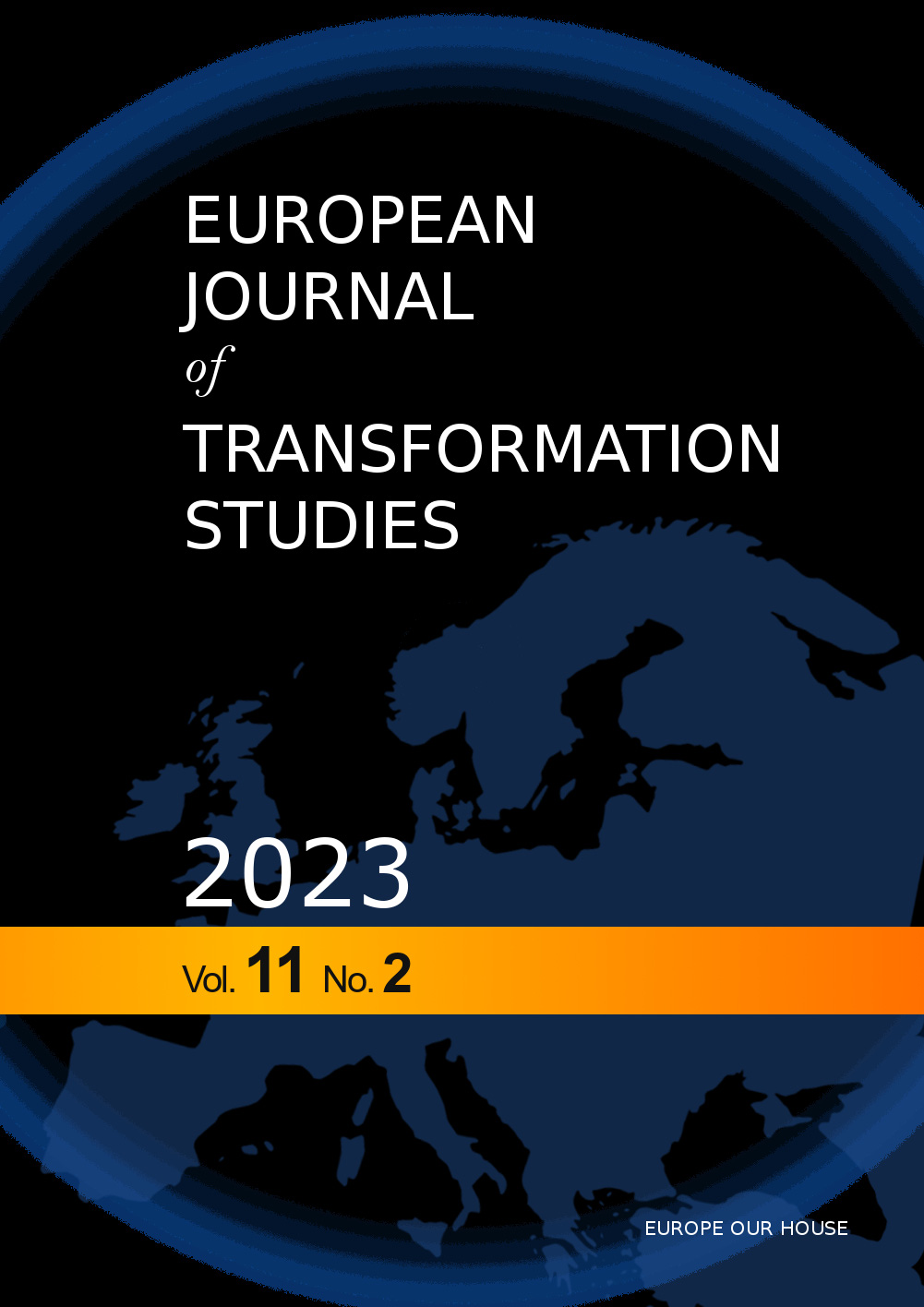Examining The Influence Of I-Voting On Electoral Engagement In Estonia
Keywords:
electronic voting, i-voting, elections, voting turnout, EstoniaAbstract
This article presents an investigation into the impact of Internet voting (i-voting) on voter turnout in Estonia. The goal is to analyse existing data to determine the extent to which it affects voter turnout. The research carefully examines trends in voter turnout and the use of i-voting to address the question of how technology affects voter engagement. The study aims to provide insight into the relationship between voting adoption and voter behaviour by examining the data. This will contribute to the ongoing debate on electoral technology and offer valuable directions for future research and policy development in this area.
Downloads
References
Anane, R., Freeland, R. F., Theodoropoulos, G., (2007), e-Voting Requirements and Implementa-tion, in The 9th IEEE International Conference on E-Commerce Technology and The 4th IEEE International Conference on Enterprise Computing, E-Commerce and E-Services (CEC-EEE 2007), Tokyo: IEE, 2007: 382-392.
Batt, S., (2019), How Electronic Voting Works: Pros and Cons vs. Paper Voting, 14.11.2019, available online at https://www.makeuseof.com/tag/how-electronic-voting-works/.
Birch, S., Cockshott, P., Renaud, K., (2014), Putting Electronic Voting under the Microscope, in The Political Quarterly 85(2): 187–194.
Council of Europe, (2010), E-voting handbook: Key Steps in the Implementation of E-enabled Elections. Strasbourg: Council of Europe.
Dobiaš, D. (2006), Voľby, demokracia a idea otvorenej spoločnosti K. R. Poppera. In: Voľby 2006 v štátoch V4: 28-29. september 2006. Prešov: Slovacontact, 2006. ISBN 9788080685959, s. 5-12.
Dobiaš, D. (2014), Utopizmus a realita demokracie. In: Politické vedy: časopis pre politológiu, najnovšie dejiny, medzinárodné vzťahy, bezpečnostné štúdiá. ISSN 1335-2741. Roč. 17, č. 1, s. 6–26.
Drechsler, W., Madise, Ü., (2004), Electronic Voting in Estonia, In Kersting, N., Baldersheim, H. (eds) Electronic Voting and Democracy, London: Palgrave Macmillan: 97-108.
e-Estonia, (2021), Cybersecurity Ecosystem in Estonia - i-Voting, 05.01.2021, available online at https://www.youtube.com/watch?v=a0zHU4E1XaE&ab_channel=e-estonia.
e-Estonia, (2022), e-Services & registries - e-Estonia, available online at https://e-estonia. com/solutions/e-governance/e-services-registries/.
Ehin, P., Solvak, M., Willemson, J., Vinkel., P., (2022), Internet voting in Estonia 2005–2019: Evidence from eleven elections, in Government Information Quarterly 39(2): 1-14.
ERR News, (2023), E-voting not serious, 05.03.2023, available online at https://news.err.ee/ 1608905354/helme-e-voting-not-serious.
ERR News, (2023), Supreme Court dismisses all election complaints, 30.03.2023, available online at https://news.err.ee/1608932273/supreme-court-dismisses-all-election-complaints.
Goldsmith, B., Ruthrauff, H., (2013), Implementing and overseeing electronic voting and counting technologies. Washington: International Foundation for Electoral Systems and National Democratic Institute for International Affairs.
Górny, M., (2021), I-voting – opportunities and threats. Conditions for the effective implementation of Internet voting on the example of Switzerland and Estonia, in Przegląd Politologiczny: 133–146.
Kapsa, I., (2021), Analytical framework for researching citizen participation in the era of e-democra- cy, in Przegląd Europejski (2021):11-24.
Kitsing, M., (2014), Internet Voting in Estonia, in Proceedings of the 2014 Conference on Electronic Governance and Open Society: Challenges in Eurasia: 137-144.
Musiał-Karg, M., (2019), An analysis of experiences with internet voting in selected countries. in E-VOTING AND E-PARTICIPATION, Poznań: Adam Mickiewicz University: 47-64.
OSCE, (2023), Estonia, Parliamentary Elections, 5 March 2023: Needs Assessment Mission Report, 16.02.2023, available online at https://www.osce.org/odihr/elections/estonia/ 537589.
Rausch, M., (2023), The positive impact of digitalization on democracy – best practices on e-governance from Ghana, Estonia, and India, 26.05.2023, available online at https://www.idea.int/news/positive-impact-digitalization-democracy-best-practices-e-governan- ce-ghana-estonia-and-india.
Scott, T., (2019), Why Electronic Voting Is Still A Bad Idea, 09.12.2019, available online at https://www.youtube.com/watch?v=LkH2r-sNjQs&t=507s&ab_channel=TomScott.
Soares, J., (2023), Thriving, Not Surviving: Digital Transformation Lessons from Estonia, 14.08,2023, available online at ihttps://www.forbes.com/sites/forbeshumanresourcescouncil/2023/08/14/thriving-not-surviving-digital-transformation-lessons-from-estonia/.
Springall, D., Finkenauer, T., Durumeric, Z., Kitcat, J., Hursti, H., MacAlpine, M., & Halderman, J. A., (2014), Security Analysis of the Estonian Internet Voting System, in CCS ‘14: Proceedings of the 2014 ACM SIGSAC Conference on Computer and Communications Security, New York: Association for Computing Machinery: 703-715.
Tsahkna, A., (2013), E-voting: Lessons from Estonia, in European View (12)1:59-66.
Toots, M., Kalvet, T., Krimmer, R., (2016), Success in eVoting – Success in eDemocracy? The Estonian Paradox, in Tambouris, E., et al. Electronic Participation. ePart 2016. Lecture Notes in Computer Science (9821): 55-66.
Valimised, (2023), Statistics about Internet voting in Estonia, 2023, available online at https://www.valimised.ee/en/archive/statistics-about-internet-voting-estonia.
Wolf, P., Nackerdien, R., Tuccinardi, D., (2011), Introducing Electronic Voting: Essential Consideration. Stockholm: International IDEA.

 Academic Scientific Journals
Academic Scientific Journals



